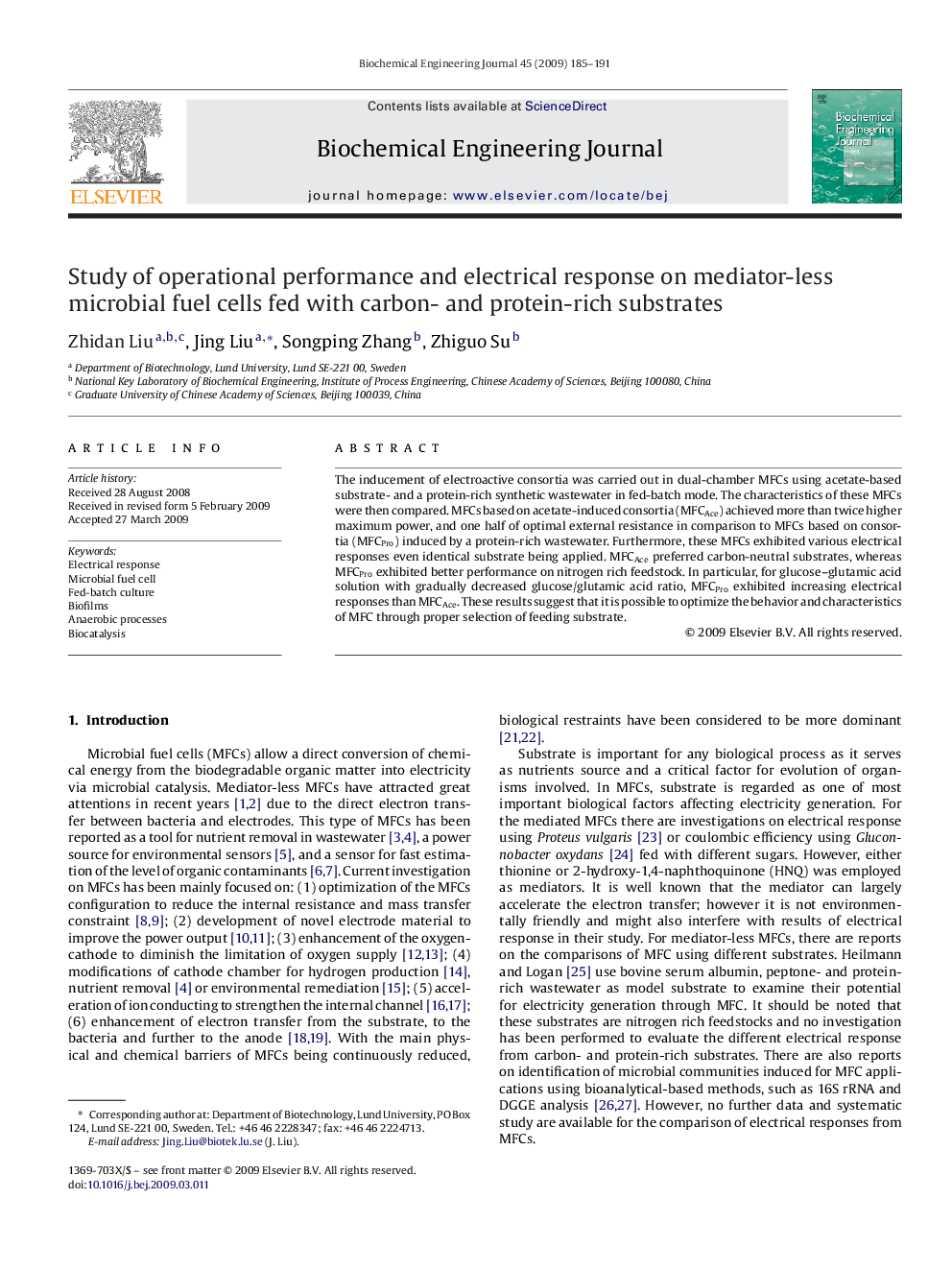| Article ID | Journal | Published Year | Pages | File Type |
|---|---|---|---|---|
| 4136 | Biochemical Engineering Journal | 2009 | 7 Pages |
The inducement of electroactive consortia was carried out in dual-chamber MFCs using acetate-based substrate- and a protein-rich synthetic wastewater in fed-batch mode. The characteristics of these MFCs were then compared. MFCs based on acetate-induced consortia (MFCAce) achieved more than twice higher maximum power, and one half of optimal external resistance in comparison to MFCs based on consortia (MFCPro) induced by a protein-rich wastewater. Furthermore, these MFCs exhibited various electrical responses even identical substrate being applied. MFCAce preferred carbon-neutral substrates, whereas MFCPro exhibited better performance on nitrogen rich feedstock. In particular, for glucose–glutamic acid solution with gradually decreased glucose/glutamic acid ratio, MFCPro exhibited increasing electrical responses than MFCAce. These results suggest that it is possible to optimize the behavior and characteristics of MFC through proper selection of feeding substrate.
